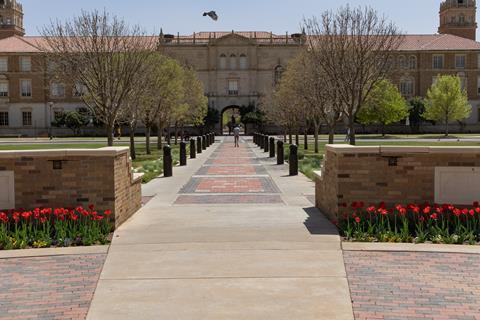US Chemical Safety Board 'greatly concerned' by frequency of academic lab accidents, recommends nationwide reporting system
US universities are under pressure to significantly step up safety at chemistry labs, following new findings and recommendations from the Chemical Safety Board (CSB). The board, which is an independent government agency charged with investigating serious chemical accidents, is ‘greatly concerned' about the frequency of academic lab incidents in the US and is calling for an overhaul.
The CSB's observations and recommendations are laid out in a recent case study report, which details a January 2010 lab accident at Texas Tech University (TTU) that led to a graduate student losing three fingers, perforating an eye and sustaining significant burns. The incident occurred when the grad student and a colleague were working with a new compound, a derivative of nickel hydrazine perchlorate, and it detonated when they were scaling up synthesis.
Although the CSB identified ‘systematic deficiencies' within TTU that contributed to the accident - including a lack of safety and management accountability and oversight, as well a failure to document, track and formally communicate past troubling events - the board made it clear that the problem extends well beyond that particular university.
Overall, the CSB has gathered preliminary information on 120 different university lab incidents since 2001. In its report, the board highlighted three recent cases, including the death of a University of California-Los Angeles research associate in early 2009 from third degree burns when the t-butyl lithium she was working with ignited. The board also cited the June 2010 injury of four people in a University of Missouri biochemistry lab from an explosion involving hydrogen, as well as a June 2010 fire at Southern Illinois University that caused roughly $1 million (£627,000) in damage.
Near misses
At TTU alone, CSB uncovered two previous near misses since 2007 within the labs of the two principal investigators in charge of the case study lab. The board said the US has no nationwide reporting system for tracking near misses and incidents at academic labs, and recommended that change. Without a method to document such cases and share lessons learned, ‘academia is missing a significant opportunity' to communicate, educate and improve lab safety, the CSB warned.
The panel also suggested that the role of grant funders in lab safety demands scrutiny, noting that government entities could exert more control by prescribing safety provisions specific to the research being conducted.

Beyond the academic setting, the CSB recommended that the American Chemical Society (ACS) develop new hazard evaluation guidelines for labs. It also called on the US Occupational Safety and Health Administration to issue a safety bulletin on the importance of controlling the physical hazards of chemicals in academic labs.
More than 110,000 graduate students and postdoctoral researchers are estimated to be working in academic labs in the US, and the CSB said the safety gaps and broader issues it identified need to be examined and addressed in a ‘larger, more comprehensive' study on academic lab safety.
The ACS appears to share CSB's concerns. ‘ACS agrees that additional guidance in academic settings is needed', the organisation's president, Nancy Jackson, tells Chemistry World. She says the ACS will determine how to best work with the CSB, chemists, academic leaders and others to ‘develop new guidelines that reinforce the culture of safety' critical to education and chemistry.
‘The CSB's case study is a call to academia to examine internal safety policies and procedures for research labs,' said the board's chairman, Rafael Moure-Eraso. ‘It's also an opportunity for research funding agencies to require universities to ensure that effective safety systems are in place before awarding grants for scientific studies.'












No comments yet